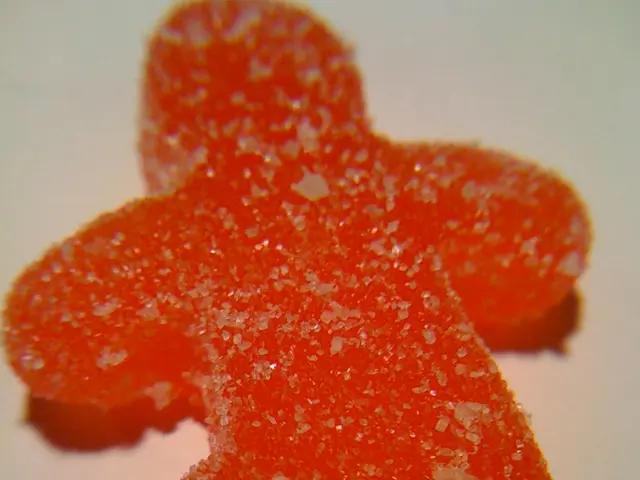Cat Hot Spots: Recognizing Symptoms and Treatment Options for Veterinarians
A Guide to Hot Spots on Cats: Signs, Causes, and Treatment
Dealing with hot spots on cats can be a frustrating experience, not just for you, but for your feline friend as well. These itchy, irritated, and painful patches can ruin the aesthetic appeal of a cat and indicate discomfort. Let's dive into the outrageous world of hot spots on cats, providing you with essential insights to identify, treat, and prevent them.
What are hot spots?
Hot Spots, also known as Acute Moist Dermatitis, are inflamed, oozing, and itchy areas of the skin. As they become more inflamed and infected, they become more bothersome to cats, triggering more licking and scratching, creating a vicious cycle.
While their fur usually hides the initial signs, as they progress, tell-tale symptoms become apparent.
Signs of hot spots on cats
Initial signs of hot spots can be subtle. However, you may notice the following:
- Overgrooming: Excessive attention paid to a particular area with fur that often seems wet.
- Pungent Smell: If your cat's sense of smell is as sensitive as yours, you might notice a bit of an odor from the affected area.
- Location: Hot spots can occur anywhere on a cat's body but are commonly found on the face, neck, rump, groin, or tummy.
How to identify a hot spot on a cat
As the hot spot progresses, you may see:
- Pink, Raw Skin: As the skin becomes inflamed and infected, it turns pink and may show signs of raw patches with no fur.
- Matted Cat Fur: The oozing discharge from the hot spot can dry and matt the fur surrounding the area.
- Scabbed and Hard Skin: Sometimes, the hot spot becomes covered with a scab and clogged with fur. If you find an area of skin that feels hard or scabby, gently investigate.
Ameliade Cat Dematting Comb | AmazonThis safe and durable dematting comb helps take out tangles from your kitty's coat with ease.
Thunderpaws Pet Dematting Rake | AmazonThis professional-grade grooming tool makes shedding a breeze, reducing the amount of fur around your home.
Hot spots vs ringworm symptoms
While hot spots and ringworm share some similarities, it's crucial to understand the differences to prevent the spread of ringworm to humans and other pets.
Cats with ringworm usually don't itch, while hot spots are synonymous with discomfort and itchiness. Cats with ringworm may have a completely normal appearance, slight dandruff on the coat, or hair loss in round patches with scurf or crusts of skin. If you suspect ringworm, consult a vet.
Causes of hot spots on cats
Hot spots can arise due to various factors that damage the skin and cause itchiness or irritation:
- Fleas or Flea Allergies: Fleas are a common cause of skin irritation, even if your cat isn't allergic to flea bites. The scratching caused by fleas weakens the skin, allowing bacteria to enter and develop a hot spot.
- Contact Allergies or Irritation: Your cat's skin may react negatively to chemicals in household cleaners, DIY supplies, or recently cleaned carpets. Such reactions can be irritating or even toxic.
- Allergies: Cats can be allergic to food, pollen, house dust mites, and other environmental allergens. Skin allergies can cause excessive scratching, overgrooming, and hair loss.
- Clipper Rash: After a vet visit for tests, scans, or surgical procedures, your cat may experience skin irritation from shaving. Hair regrowth can also cause itchiness, leading to hot spots.
- Stress and Overgrooming: Cats are susceptible to stress, which can result in overgrooming, damage to the skin, and hot spots.
Treating hot spots in cats
Shaving the affected area, thorough cleaning, and removing debris can help treat hot spots. However, it's essential to control the itch to prevent further licking. A veterinarian may prescribe medication, including antibiotics and steroid creams or injections.
Home remedies for hot spots in cats
Using a set of clippers, gently remove the fur from the affected area. Bath the area with a saltwater solution two or three times daily, and discourage your cat from licking the area.
If the hot spot persists or your cat appears unwell, seek veterinary attention.
Preventing hot spots in cats
Preventive measures include:
- Maintaining regular flea treatments.
- Monitoring the cat for overgrooming or signs of stress.
- Reducing exposure to household chemicals.
- Ensuring your cat's collar does not rub.
- Regularly checking your cat's skin for signs of hot spots.
By implementing these tips, you'll be well on your way to a hot spot-free feline life!
- Maintaining a balanced health-and-wellness routine for your pet cat can include regular skin-care, especially as hot spots, or Acute Moist Dermatitis, can potentially arise due to various factors that cause itchiness or irritation.
- Proper grooming behavior is essential in preventing hot spots, ensuring that food particles, debris, or tangles are kept to a minimum on a cat's skin.
- To identify a hot spot, look for overgrooming, pink, raw skin, matted cat fur, scabbed and hard skin, or a pungent smell that indicates bacterial infection and inflammation.
- In the science of pet care, it's critical to understand the differences between hot spots and other skin conditions, such as ringworm, to ensure proper treatment and prevent the spread of infections to humans and other pets.
- To treat hot spots, you may need to shave the affected area, clean it thoroughly, and apply medication prescribed by a veterinarian, potentially including antibiotics and steroid creams or injections, while also addressing the underlying cause, such as fleas or allergies.








